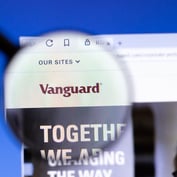The summary trial close is the final step in closing the sale, which I identify as the “element of hurry.” It consists of two parts. First, summarize and review the main points of your presentation. List all the features and benefits that they have already agreed on in a conversational manner with what you showed them so far. Finally, make a trial close. A trial close is when you test the water to see if they are ready to purchase and sign the paperwork. Remember, it’s OK to close or attempt to close early, but never close too late. You want to close when the client is at the lowest sales resistance and highest sales acceptance and the clients are ready to purchase your services. This is where most salespeople self-implode and they talk themselves past the sale.
Watch for the buying signs. There are two types of signs, visual and verbal, that help you know that they are warming up to you. You’ll see the first signs: They’re leaning forward, nodding their heads, intently reading something, or maybe even their warm affection while looking at each other and smiling. The verbal clues could be, for example, asking you to repeat something, asking technical questions, making positive statements, or making a noise when they are asking you to explain something in greater detail.
Once you have seen or heard positive signs, it’s time to take their buying temperature. There are three ways to do this at this point in the sale. All three involve asking questions. The first way you can test the waters is with an alternate question. Such as, “If you start taking income from this, John and Mary, do you want to take income on the 1st or are you looking at the 15th? Are you thinking about taking income this year or waiting until next year?”
Again, use some sort of alternate choice question. Another question is an involvement question. You will know that they are involved when they answer a question about a product they have already purchased in their mind and are already using it. It should go something like this: “Do you want your beneficiaries to receive this death benefit as a lump-sum or stretched over their lives?”








 March 31, 2008 at 08:00 PM
March 31, 2008 at 08:00 PM










